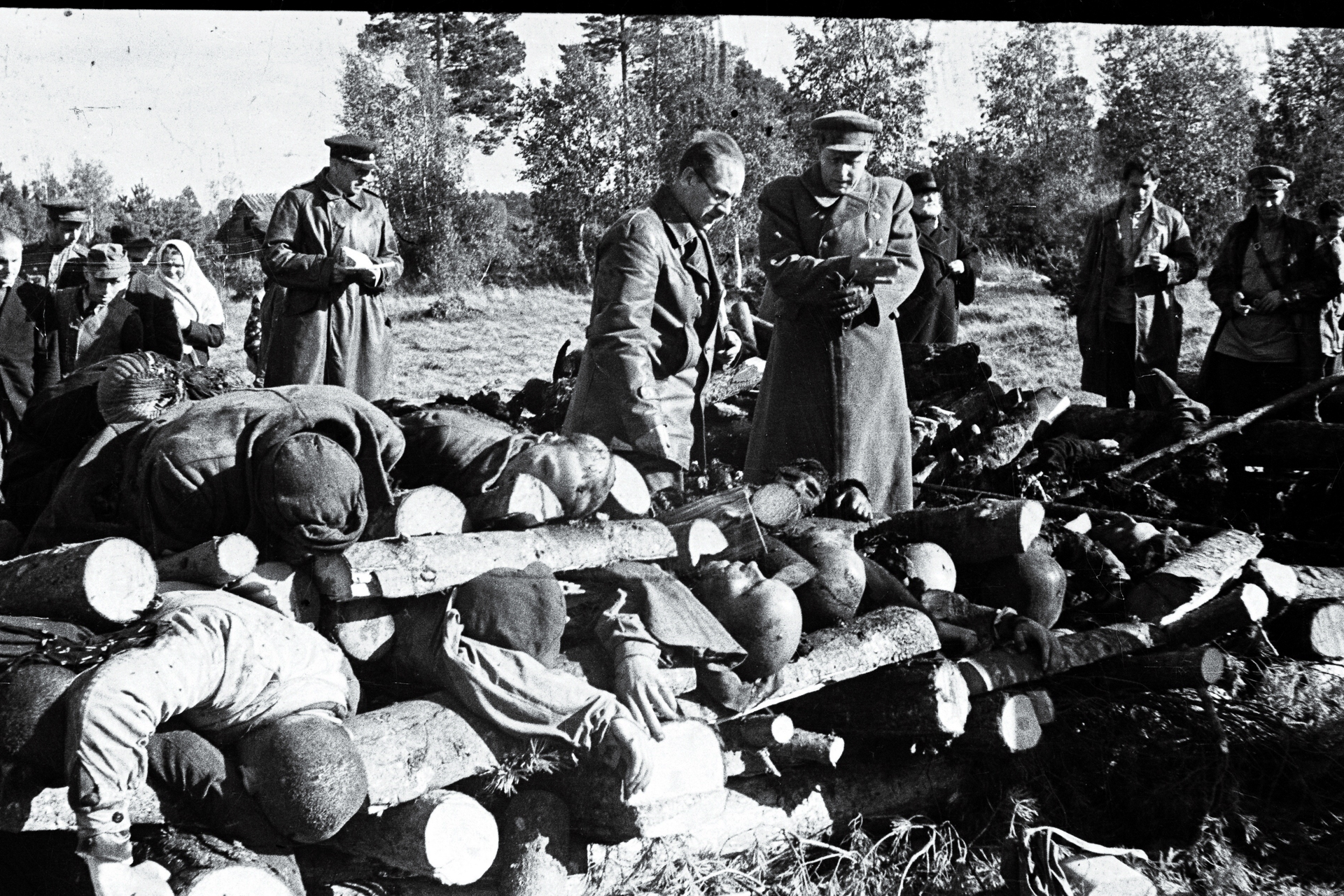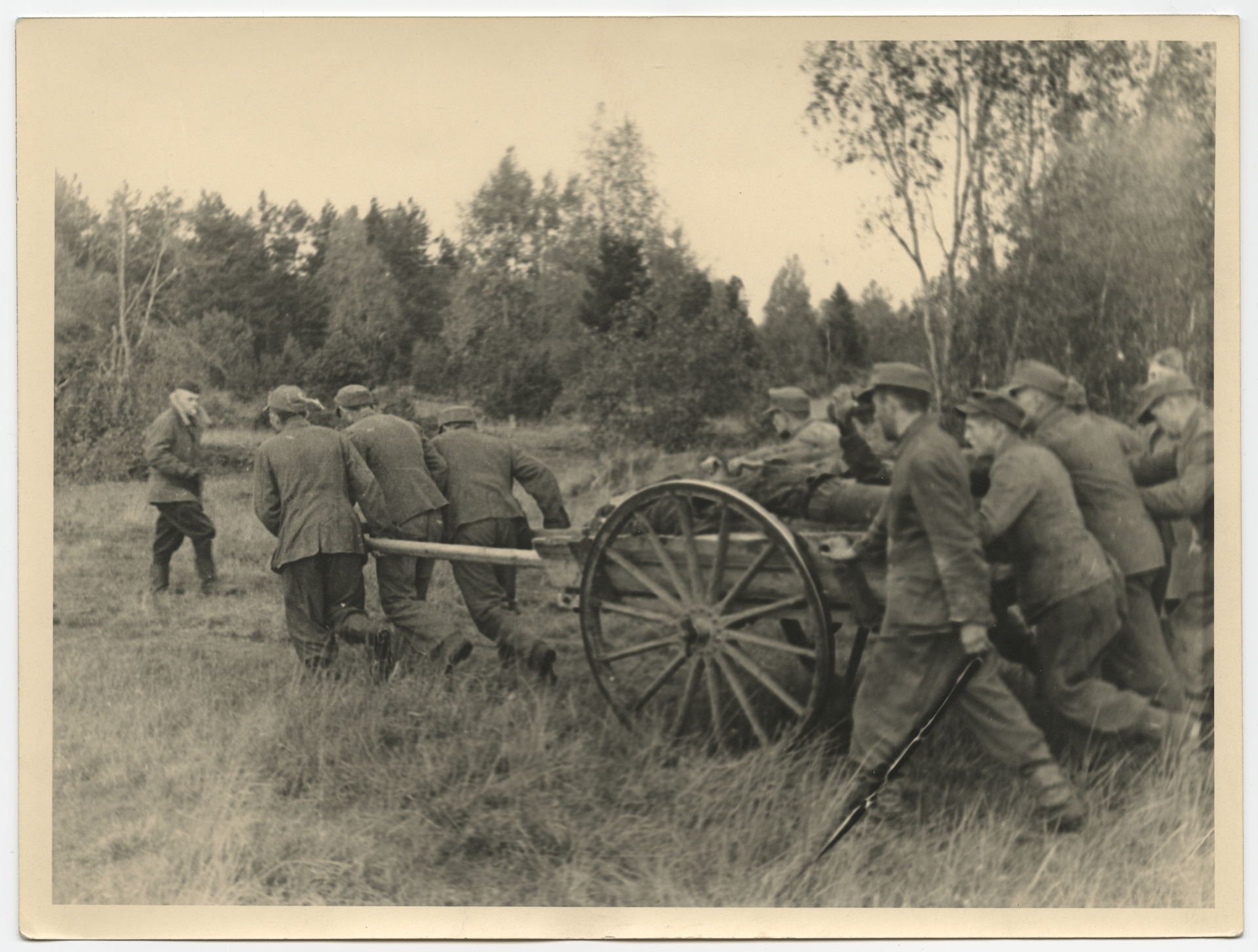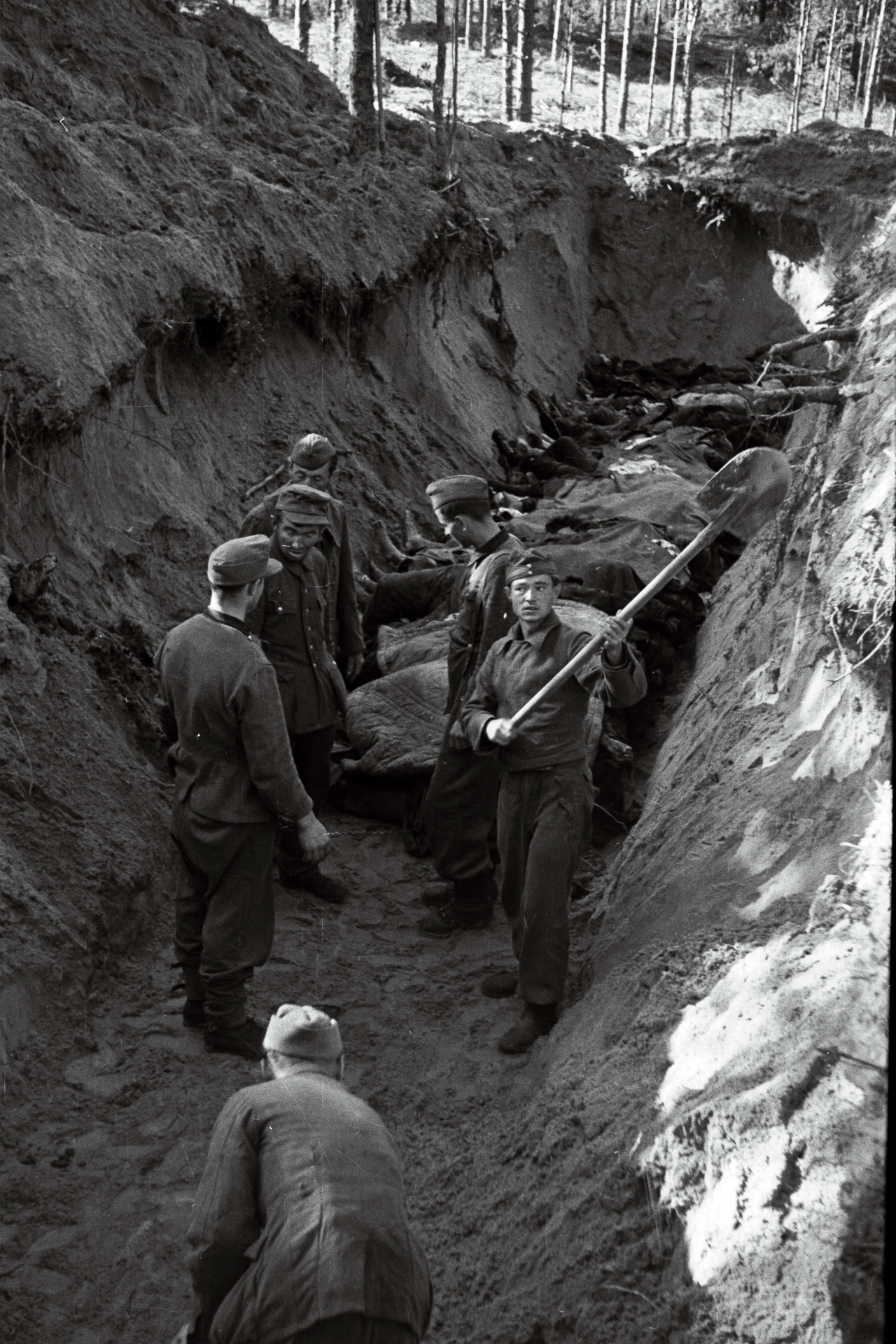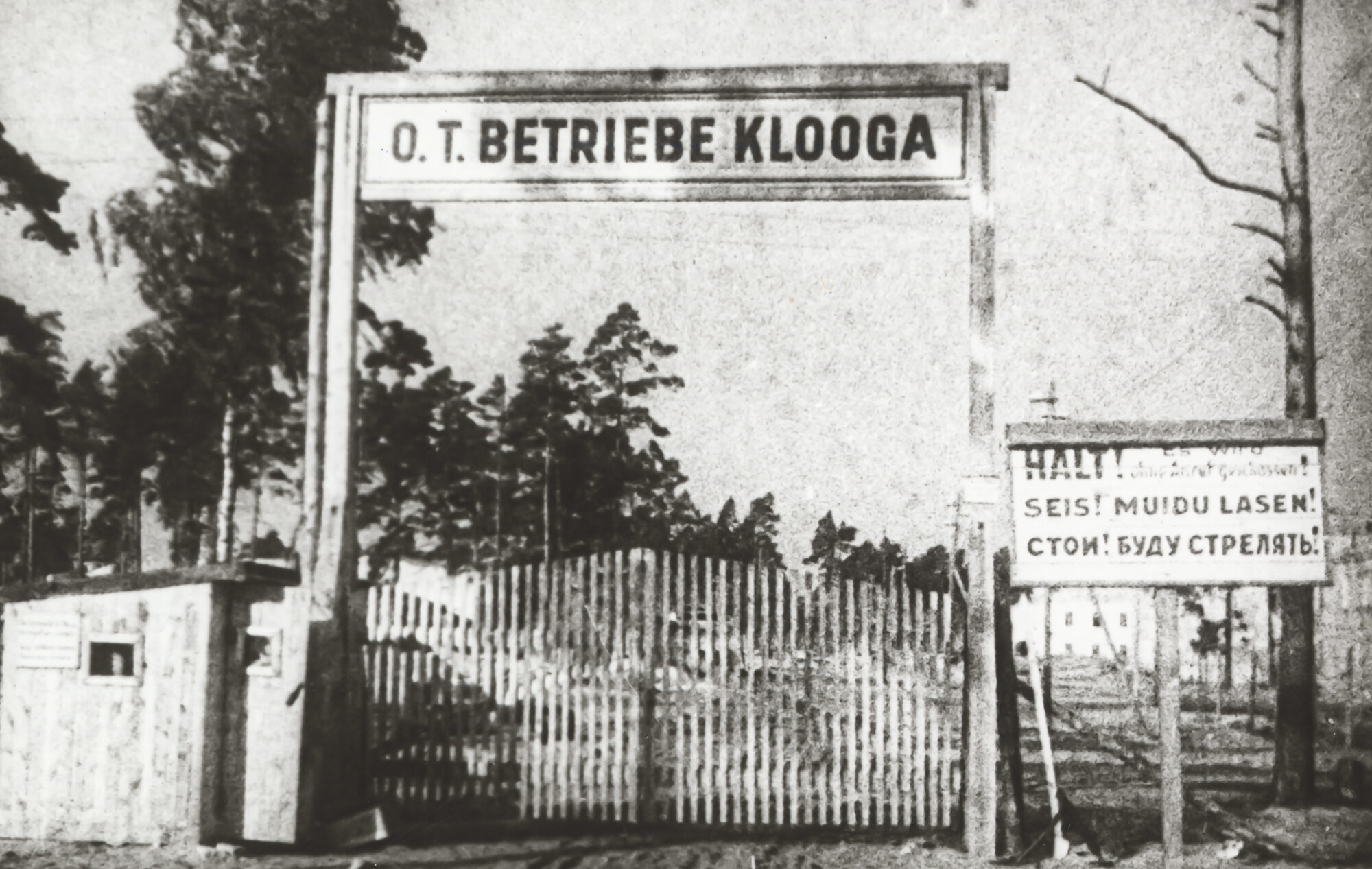After killing the prisoners and burning the bodies, the camp leadership left Klooga for Paldiski harbour to be evacuated to Germany late on the night of 19 September 1944. The camp guards were removed on the night of 20 September and the Estonian guard company also left. Most of the Jews who had escaped the killing hid for days in the camp’s barracks, being too afraid to go outside during the day. The stench from the burning bodies spread far and this brought the first witnesses to the site. News of the mass murders spread among the local population and among war refugees fleeing to the west coast of Estonia ahead of the advancing front. Many refugees took this terrible memory with them to the free world.
The Red Army first arrived in Klooga on 22 September 1944. The Soviet authorities formed an extraordinary state commission of the Estonian SSR led by the People’s Commissar of Justice Aleksander Jõeäär to investigate the event. Already by the end of September, an inquiry into the Klooga mass murder had begun. The commission found much evidence. Some of the bodies had not completely burned on the pyres. The other murder site, the half-built building, had been razed to its foundations. A lot of bones and human remains were found there, but because of the fire it was impossible to determine the precise number of victims. The extraordinary commission was able to identify the remains of 491 bodies from all the execution sites. The inquiry established that the number of victims could have between 1,800 and 2,000.
Klooga concentration camp was among the first sites in the world where the horrors of the Holocaust were documented. The Soviet authorities brought a hand-picked group of selected foreign journalists to the site and as a result photographs of Klooga reached the Western world.
A funeral ceremony for the victims of the mass murder was held on 7 October 1944. German POWs were forced to dig two long, deep graves in the sandy hill near the burned pyres, and the bodies were gathered together and buried there. The site of the grave was surrounded by a stone wall, and in 1951, a memorial stone was erected there (architect: Ants Mellik).
The horror of what happened was described in detail in the Soviet media in late 1944 and early 1945, and on many occasions after the war. From the very beginning, for ideological reasons, it was not mentioned that the camp inmates were Jews. The victims were called anonymous “Soviet citizens”, but in fact, most of them had never been citizens of the Soviet Union.



